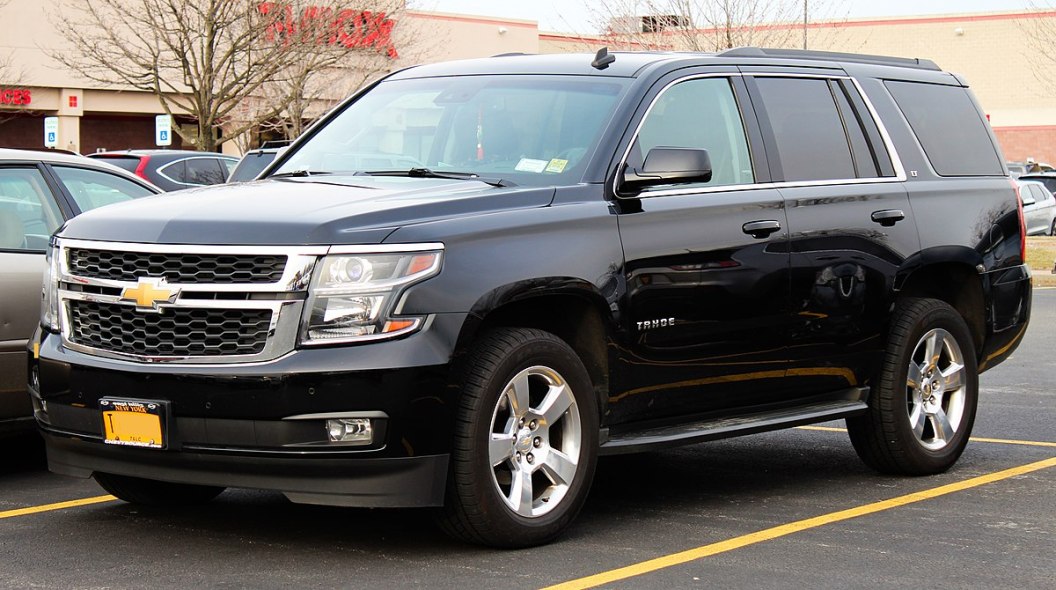For nearly two decades, the Chevrolet Tahoe has been the best-selling full-size SUV in the United States, often outselling its main competition, the Ford Expedition, by a nearly two-to-one margin. In total, Chevy has sold over 2.6 million Tahoes. Its sales reached an all-time peak in 2002 at 209,000, and since then, it has averaged about 120,000 sales per year.
Needless to say, the Chevy Tahoe is clearly a successful model. But, how did this best-selling SUV come to the world, and what should we expect from the new 2020 Chevy Tahoe model year and beyond? We'll answer all these questions and more here!
2020 Chevy Tahoe
The new 2020 Tahoe is finally here. The new model year introduces just a few attractive updates over the 2019 Tahoe line that anyone looking to purchase a new SUV might be excited about.
The 2020 Tahoe features updated wheel trims to accent the Tahoe's body styling. These include options for 22-inch Gloss Black aluminum wheels with custom silver accents and 22-inch Bright machined aluminum wheels with bright silver finish.
The only other notable change is that two trim level packages are no longer available as of 2020. These include the Chevrolet Tahoe LT Signature Package and All-Season Package.
The Tahoe gets a 14-mpg fuel economy out of its same towing focused V8 engine powertrain. The touch screen interface for the infotainment system is also a direct copy of the previous model. This carryover also applies to the lane departure warning and forward collision alert systems, as well as other driver assistance features.
The 2020 Tahoe is available for between $48,000 and $65,700 MSRP.
Read More: Chevy Silverado Driver Shows You How to Off-Road on Sand Dunes
The History of the Tahoe
The Tahoe is a younger sibling to both the Chevy Silverado and the GMC Yukon. Both the Yukon and Tahoe borrow the Silverado's platform, and the Tahoe was originally a rebadged economy version of the Yukon. As you might have guessed, the design was named after Lake Tahoe.
Tahoes flew off of dealership lots as soon as they hit the market and steadily rose for about five years. By 1998, two years after its first model year, the Tahoe was already selling well over 100,000 units per year. These numbers steadily rose until their peak in 2001.
Large quality of life improvements and updates like adaptive cruise control, Android Auto, leather seats, safety features, third-row seats, entertainment system, Apple Carplay, sunroof, heated steering wheel, power liftgate, WIFI, magnetic ride control, increased front seat and second-row cargo space, climate control, and satellite radio have kept the Chevrolet Tahoe selling well over the years. The Tahoe already has four generations and doesn't seem to be slowing down.
The Future of the Tahoe
The 2020 Tahoe will be the last of the fourth-generation models, which means the next Tahoe, possibly a 2021 model-year, will introduce the fifth generation. Chevrolet will probably use this as an opportunity to make long-awaited updates.
Namely, the Chevrolet Tahoe team is expected to bring its rear axle in line with competition via a new independent rear suspension. Chevy has been putting off this update for several years, which will greatly increase the ride quality for second-row rear seat and third-row riders.
The Ford Expedition added independent suspension all the way back in 2003, however, the Tahoe held out for fear of reducing towing capacity. Now that these systems are consumer tested and a new generation of Tahoes is on the way, now would be the right moment for this much-needed update.
As of now, this is all we can speculate on until more information comes down from the design and marketing teams.
Read More: See Why the Chevy Silverado 6?—6 Is the Most Expensive Chevy Truck




